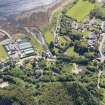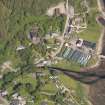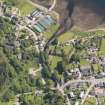Pricing Change
New pricing for orders of material from this site will come into place shortly. Charges for supply of digital images, digitisation on demand, prints and licensing will be altered.
Upcoming Maintenance
Please be advised that this website will undergo scheduled maintenance on the following dates:
Thursday, 9 January: 11:00 AM - 3:00 PM
Thursday, 23 January: 11:00 AM - 3:00 PM
Thursday, 30 January: 11:00 AM - 3:00 PM
During these times, some functionality such as image purchasing may be temporarily unavailable. We apologise for any inconvenience this may cause.
Craleckan Ironworks, Furnace
Blast Furnace (18th Century), Iron Works (18th Century)
Site Name Craleckan Ironworks, Furnace
Classification Blast Furnace (18th Century), Iron Works (18th Century)
Alternative Name(s) Furnace Village; Blast Furnace; Argyll Furnace; Furnace, Ironworks; Loch Fyne
Canmore ID 23401
Site Number NN00SW 11
NGR NN 02562 00056
Datum OSGB36 - NGR
Permalink http://canmore.org.uk/site/23401
- Council Argyll And Bute
- Parish Inveraray
- Former Region Strathclyde
- Former District Argyll And Bute
- Former County Argyll
NN00SW 11.00 02562 00056
NN00SW 11.01 NN 0260 0010 Charcoal Shed
(Location cited as NN 027 001). Built 1755 by the Argyll Furnace Co. A remarkably complete tapering square blast furnace, built of drystone rubble, with a single-storey casting house, now roofoed with corrugated iron, and the roofless ruin of a two-storey block, the upper floor of which was the bridge-house, for charging the furnace, and the lower the blowing-engine house. The lining of the furnace appears to be of stonew, and intact. There are two cast-iron lintels to the tuyere-arch, one plain and the other with the inscription 'C (or G) F 1755 (or 3)'. Above the furnace is a large rubble building, now roofed in corrugated iron, which was probably a charcoal-shed, and to the S is the site of the reservoir, with a small three-bay 'waterhouse'.
J R Hume 1977.
Scheduled as Furnace, ironworks.
Information from Historic Scotland, scheduling document dated 8 November 2000.
This site has only been partially upgraded for SCRAN. Please consult the Architecture Catalogues for Argyll District for further information.
January 1998
Craleckan Ironworks.
Dated CF 175(5).
External Reference (20 July 1971)
Dated 1755. Large square furnace with 2 wings. Rubble in courses.
FURNACE: splayed sides; large fire-place at each wing (one with iron lintel
inscribed GF 1755) 'Tuyere' intact.
MAIN WING: 2 storeys. Roofless. Segmental-arched entrance; small
window-openings.
Lesser wing: 1 storey, gabled roof. Converted into garage.
O.S.A.
Ruin (except for garage wing) Erected by Argyll Furnace Company for
smelting iron ore (from Lancashire) by means of charcoal.
Information from Historic Scotland, 20 July 1971
Measured Survey (1983)
RCAHMS surveyed the old iron furnace, Craleckan Ironworks, Furnace in 1983 producing ground, first and upper floor plans, a south elevation and sections at a scale of 1:100. The plans, elevation and sections were redrawn in ink and published at a scale of 1:250 (RCAHMS 1992, 488).
Measured Survey (22 May 1984)
RCAHMS surveyed the storage shed, old iron furnace, Craleckan Ironworks, Furnace on 22 May 1984 producing a plan and sections at a scale of 1:100. The plan and sections were redrawn in ink and published at a scale of 1:250 (RCAHMS 1992, 492).
Measured Survey (22 May 1984 - 25 May 1984)
RCAHMS surveyed the Old iron furnace, Craleckan Ironworks, Furnace between 22-25 May 1984 producing a site plan and section at a scale of 1:400. The plan and section were redrawn in ink and published at a scale of 1:1000 (RCAHMS 1992, 489).
Publication Account (1986)
The Craleckan Ironworks, situated at Furnace, on the shore of Loch Fyne, was established two years after Bonawe by the Duddon Furnace Company, another concern stemming from the Furness district of Lancashire. It appears to have been organised on similar lines to Bonawe, but the complex as a whole is no longer so well defined, having ceased production about 1813. Of the manufactory buildings, which occupy the customary bankside position, there are substantial remains of a former charcoal-shed evidently capable of holding about 600 dozen bags of charcoal, and the furnace itself, which together with its associated buildings is remarkably complete. One of the cast-iron lintels over the tuyere-opening bears an indistinct inscription, C (?G) F 1755, and the hearth area is potentially of unique technological interest in that the lining has remained undisturbed since the furnace was finally damped down. Ancillary buildings include the usual casting-house and a blowing-house, the latter, unlike the layout of its English parent furnace at Duddon Bridge and of that at Bonawe, being located beneath the charging-house. The Craleckan furnace also appears to have incorporated a forge, situated between the casting-and blowing-houses, which probably operated on a sufficient scale to be equipped with finery hearths and forging-hammers, necessary for fashioning the pig-iron into wrought iron.
Information from ‘Monuments of Industry: An Illustrated Historical Record’, (1986).
Field Visit (April 1988)
The uniquely well-preserved stack of this charcoal-burning blast-furnace stands at the NE side of the road from Furnace village (formerly Inverleckan) to Furnace granite-quarry and Pennymore, on the E bank of the Leacann Water and about l00m from the NW shore of Loch Fyne. It was built in 1755 on land leased from the Argyll estate by the Duddon Company, whose own furnace of 1736 is the best-preserved in Cumbria, and it ceased operations in 1812, remaining almost untouched since that time. Some minor repairs and repointing were carried out in 1978.
The storage-sheds for imported iron-ore and locally-produced charcoal stood on a higher terrace about 40m to the E, but except for one much-altered shed only fragmentary remains survive. Estate-maps of about 1789 by George Langlands (en.1) show four other buildings extending S from this terrace towards the shore, but the maps are inaccurate in detail and the buildings cannot with certainty be identified with any of those existing on the site. There were slight remains in the 19th century of a boulder-built jetty at the mouth of the river, where Langlands indicated a 'quay', but other jetties further E were probably connected with the later Gunpowder Works (No. 244) and quarry. The area between the furnace and the shore seems the most probable site for dumping of slag, but the excavation for the site of a fish-farm in 1987 showed few remains of slag, and it may have been removed during the 19th century for re-smelting.
The furnace company's contract of 1754 empowered them to dam Loch Leacann, 3.7km to the NNW, to control the flow of the Leacann Water, but the two-period dam at the E end of the loch, which was rebuilt in 1988 to serve a fish-farm situated immediately S of the furnace, itself probably dated from improvements of 1842 for the powder-works, and later use of the loch as a reservoir. A lade running along the 18m contour from the SE bank of the Leacann Water, which was dammed 550m NNW of the furnace, can be followed for most of its course, except where interrupted by the quarriers' houses at Bridge Terrace, to a point 50m NE of the furnace-stack. Where best-preserved, on the hillside close to its junction with the river and on level ground SE of the approach-road to South Craleckan, it appears as a ditch up to 2m deep and 2.5m wide, revetted on the hillside by an earth-and-stone bank up to 1.8m wide.
Historical note
The Duddon Company (Henry and Jonathon Kendall and partners), like the Newland Company which established the Lorn Furnace, found itself excluded from many of its former sources of charcoal in Cumbria by a wood-owners' combination in 1748, and turned to the Argyll estate for an alternative supply. Estimates of the potential supply of charcoal, bark and timber in the estate's woods of Glen Shira, Glen Aray, west Lochfyneside and Loch Tarbert (Dunmore) were made by a company agent in 1751. A further valuation of 1753 included extensive woodlands on the E and W shores of Loch Awe and listed thirteen other gentlemen 'which propose felling their woods to incorrage the Building a Furnace at Craleckan', including all of the landowners on the E shore of Loch Fyne. In the same year the company, having received written proposals from the 3rd Duke of Argyll, 'viewd the Premises whereon it is proposed they should erect a Furnace on his Grace's Farm at Craleckin, as well as the Water which will be necessary', and made detailed suggestions about ensuring the supply of charcoal and water, including the right to dam Loch Leacann and to close Braleckan mill if necessary. A formal contract between the Duke and' the company, concerned mainly with woodlandaccess but also leasing to them for 57 years the farms of Craleckan, where the furnace was to be established, and Braleckan, was signed in October 1754 and came into effect on Whitsunday 1755. The company bound itself 'to erect, build and compleatly finish a furnace or furnaces . . . and to carry on Ironworks there, and which furnaces are to be keept going by them as long as they can be supplyed with Coals’ (en.6).
The company bound itself to erect a furnace within three years, and the inscribed lintel, presumably cast at Duddon (infra), indicates that construction began almost immediately. The farm of Goatfield, W of the Leacann Water, was rented from Colin Campbell of Ederline and its substantial house was used as the manager's residence, so the furnace was known by that name as well as by that of the farm of Craleckan on which it stood. By 1779, however, five families totalling 33 people were listed at 'Argyll Furnace', and this came to be the normal designation for the company. Two of the households were those of Richard Mires and Thomas Lames, both presumably from Cumbria although one with a local Sinclair wife, and the resident manager until about 1795 was Joseph Latham, a member of the family which acquired outright control of the Duddon Company in the late 18th century (en.7).
Surviving account-books of the parent company for the years 1755-65 record constant communication between the two works, including visits 'into Scotland' by the manager from Duddon, and the supply from Cumbria of meal, butter, and in 1759 a malt mill. The construction of the buildings in 1755 required the despatch of 5000 'slate pins', the 'carriage of tree for the Furnace (?bellows) shaft at Craleckin', and the shipping of 'three sows for Goatfield', probably three of the cast-iron lintels of the furnace-stack, and in the following year a payment was made to 'John Benson, mason, at Argyll Furnace work'. Payments are recorded for the shipment of ironstone or 'mine', 30 tons in 1757 and 9 tons in 1763, and items such as riddles, charcoal-baskets, sacks, packsaddles, pony-girths and sail twine were regularly supplied. 'Castings' and 'Iron' for the Argyll Furnace were obtained in 1758 and 1759, however, not from Duddon but from the Lorn Furnace or, less probably, its parent company at Newland. Timber, notably ash wood, and probably charcoal, were being shipped from Argyll to Cumbria from 1757 onwards, and in 1774 there are records of the shipment, apparently from the Argyll Furnace, of about 43 tons of 'piggs' and one ton of 'plates’ (en.8*).
From the outset the company concerned itself with the condition of local roads, 'as Charcoals are things very subject to damage in carriage'. It suggested and contributed to the building of bridges across the Leacann Water and the improvement of the roads from Lochaweside (No. 274), where later tradition recalled trains of packhorses laden with charcoal, and Latham acted as a Road Trustee and a supervisor of road improvements (en.9). The extensive network of woodland agreements with landowners is indicated by the wide distribution of charcoal-burning stances in the area covered by this Inventory, as well as by surviving documentary records. The interests of the company in Knapdale overlapped with those of the Lorn Furnace Company, but there was an understanding between the two companies not to compete for woods, and Latham was requested to give advice to a new manager at Bonawe (en.10*).
One of the farm-plans surveyed by George Langlands about 1789 showed a 'proposed village' of houses and gardens, extending SE from the bridge (NN 024001) over the site of the furnace and its ancillary buildings to the shore, with crofts on the hillside to the N, but nothing came of this scheme (en.11). The furnace, with William Benn succeeding Latham as manager about 1795, continued to operate until the expiry of its lease, although there appears to have been some decline in production. Whereas in 1788 the reported annual output of pig-iron was 700 tons, identical with that at Bonawe, in 1796 it was estimated as only 300 tons (en.12). In 1809 the Argyll estate advertised 'the melting furnace and farms . . . in a country abounding in Wood, and possessing the advantage of water carriage', to let from Whitsunday 1812. adding that 'the Mine Houses will contain above 800 tons, and the Coal Houses above 600 dozen bags of charcoal'. No offers were forthcoming, however, and the Argyll Furnace Company vacated the property in 1812, obtaining certificates in the following year that they had left the buildings in good condition. The furnace buildings are shown as roofed on the 1866 OS map, but it is not known whether the minor alterations described above were made after 1841, for the gunpowder company, or earlier (en.13*).
RCAHMS 1992, visited April 1988
[A detailed and illustrated architectural description of the furnace, blowing house, casting house, enclosure and storage-sheds can be found in RCAHMS 1992, pp.487-493]
Publication Account (1990)
Established in 1754 by contract between Henry Kendall (Duddon Company) of Cumbria and the Argyll Estate. A cast-iron lintel above the bellows-opening, inscribed G(oatfield) F(urnace) 1755, presumably furnishes a foundation date. The original lease was not renewed in 1812. The furnace-stack is uniquely well preserved, including the sandstone lining of the hearth and the socket of the tuyere (bellows nozzle). Locally produced charcoal and ore shipped from Cumbria were stored in large sheds on the terrace to the NE, of which one survives, much altered, as a coal-depot. The bridge for carring materials to the charging-mouth of the furnace was here incorporated in the top floor of the three-storeyed block which also housed the water-driven bellows. The buildings preserved traditional Lake District constructional features such as the projecting drop-slabs above opening, and green Lakeland slate was used for the roofs.
Information from ‘RCAHMS Excursion guide 1990: Commissioners' field excursion, Argyll, 7-9 May 1990’.




























































































































